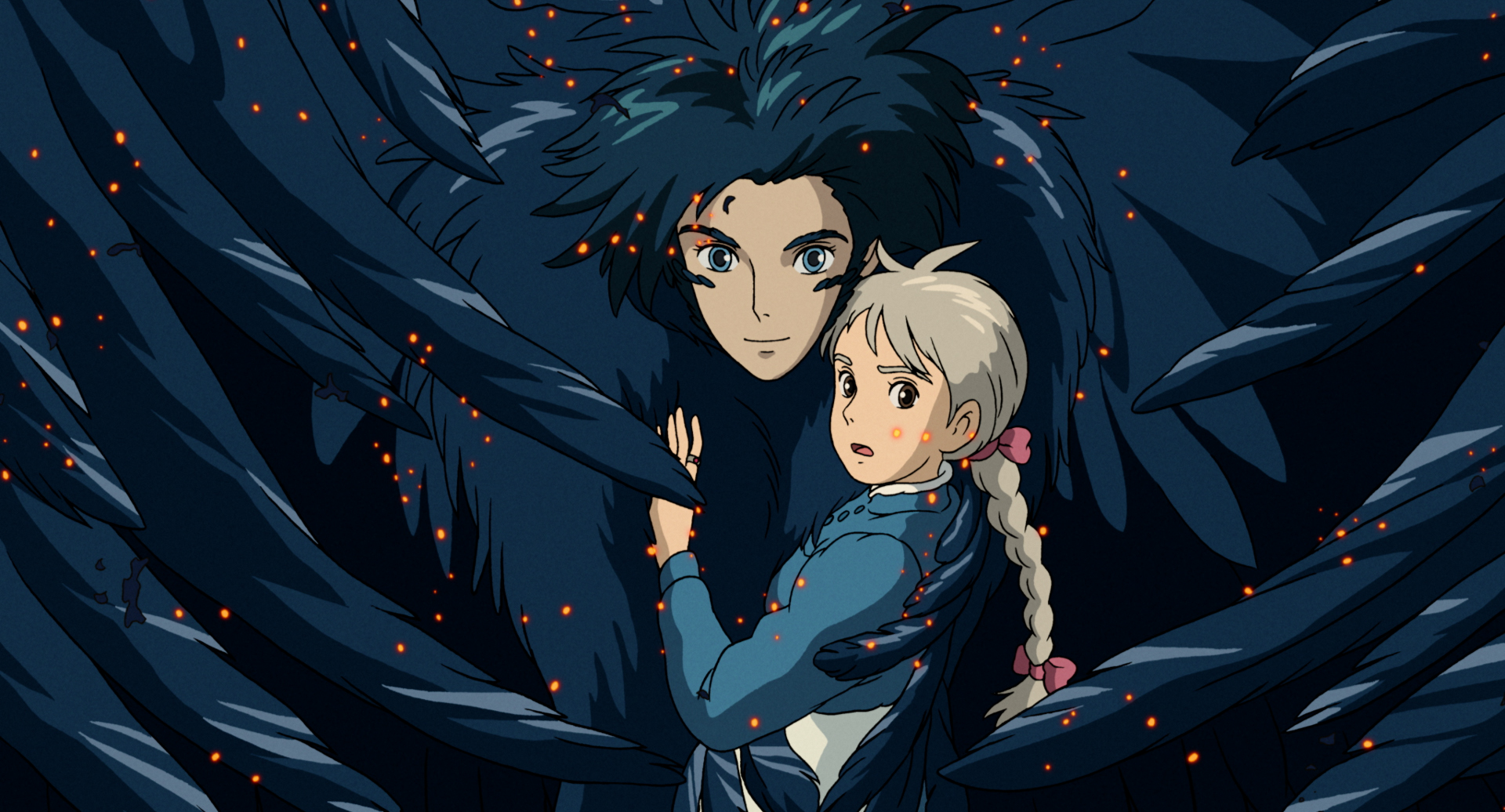Howl's Moving Castle (2004)
Hayao Miyazaki is widely (rightfully) lauded as one of the best animation filmmakers of all time. One select group of individuals who might understandably have a bone to pick with the Studio Ghibli maestro it’s the authors of the books that some of his films were adapted from. Miyazaki’s adaptations play infamously fast and loose with the source material. Diana Wynne Jones, the late, great, Welsh writer of the original Howl’s Moving Castle novel reportedly wasn’t too thrilled with Miyazaki’s film. The director himself however has been quoted as saying the film was the favourite of his own creations.
Howl’s Moving Castle was written and directed by Hayao Miyazaki based on the 1986 book of the same name. It was produced by Toshi Suzuki, and regular Ghibli collaborator Joe Hisaishi composed the score. The film premiered at the Venice Film Festival in 2004, before being released in Japan in November of the same year. It was originally released in the US in 2005 by Disney, featuring a dub supervised by Pixar’s Pete Docter, and later re-released by GKIDS Films. StudioCanal released the film in the United Kingdom and have issued a new Collector’s Edition Blu-ray combo-pack in February 2022.
The story features Sophie, an 18-year old hatmaker. But after an encounter with a wizard on the run from a witch, she finds herself cursed and turned into an elderly woman. It turns out the wizard was none other than Howl, an infamous sorcerer who travels the wastelands in his moving castle. Sophie takes shelter in Howl’s castle, posing as his new housekeeper.
The film has one of the most memorable opening shots of any of Miyazaki’s work. It begins with the titular structure emerging from the mist. And what a creation it is. Far from a traditional fairy-tale castle that you might expect, it’s a misshapen, almost organic pile of steam-powered junk that moves along on spindly little legs. It’s a wonderful piece of intricate. art. As it trundles along, it’s clear that far from making their films lose any of their magic, Ghibli animator’s embrace of digital technology has only added even more strings to their bows.
The fantasy world of Howl is as gorgeously brought to life as you would expect. Taking inspiration from real-world locals, beautiful alpine landscapes and beautiful European-style towns, it’s a return to similar territory we have seen in Kiki’s Delivery Service and Castle In The Sky.
Sophie is an interesting spin on the classic Miyazaki heroine. As determined, spirited and pure-hearted as any of Ghibli’s typical female leads, Sophie unexpectedly finds freedom in her aged form. Reportedly, the film is essentially a love letter from Miyazaki to his wife, conveying how age has not changed how he sees her. For wider audiences, it contains a positive message about not underestimating or looking down on our elders.
And make no mistake- while Howl might be the eponymous character, Sophie is the film’s lead- and its heart. Howl is a presence felt throughout the film- at least as long as we are in the walls of the castle- but he’s frequently absent. The vein, self-centred wizard frequently makes dramatic entrances and exits, leaving chaos in his wake. If Sophie is a stand-in for Mrs Miyazaki, then it is a reasonable assumption that Howl is (at least in part) a self-deprecating self-portrait: Howl’s obsession with his magical affairs could represent Miyazaki’s own with his work.
The relationship between Howl and Sophie is a major part of the film, which is much more overtly romantic than in any of Miyazaki’s other films. Which is not to say that Sophie only finds herself through the love of a man (well, a wizard) but that she finds herself on her own. In fact, it’s Howl whose love for Sophie ultimately makes him a better person.
At first, we seem to have a more traditional villain in the form of The Witch Of The Waste, the sorceress who places the curse on Sophie. Ultimately, her character takes an unexpected turn, but not before we get a fantastic chase scene where Sophie and Howl are pursued by the Witch’s sinister minions.
 |
| ALL IMAGES: © 2004 Studio Ghibli - NDDMT |
And of course, Howl’s world is populated by a variety of wonderful characters. The most beloved is probably Calcifer, the wisecracking fire demon who powers the castle (memorably voiced by Billy Crystal in the dub). Equally unforgettable are the turnip-headed hopping scarecrow who Sophie encounters in the waste and the adorable, asthmatic elderly dog she meets in the palace.
Although there is plenty of weirdness on display, Howl’s Moving Castle is a shade more conventional than most of Miyazaki’s other works. From the perspective of this being his first film following on from his world-beating Spirited Away, you can maybe understand why some viewers and critics were a little underwhelmed at the time.
From the vantage point of the year 2022 though, flaws are hard to find. It’s perhaps a bit overlong, but the film remains one of the most beautiful 2D animated films ever made and is a thoroughly absorbing, fantasy adventure that will captivate audiences of all ages. Besides, being a step-down from Spirited Away (widely considered one of the best animated films of all time) is nothing to be ashamed of.
★★★★★


























